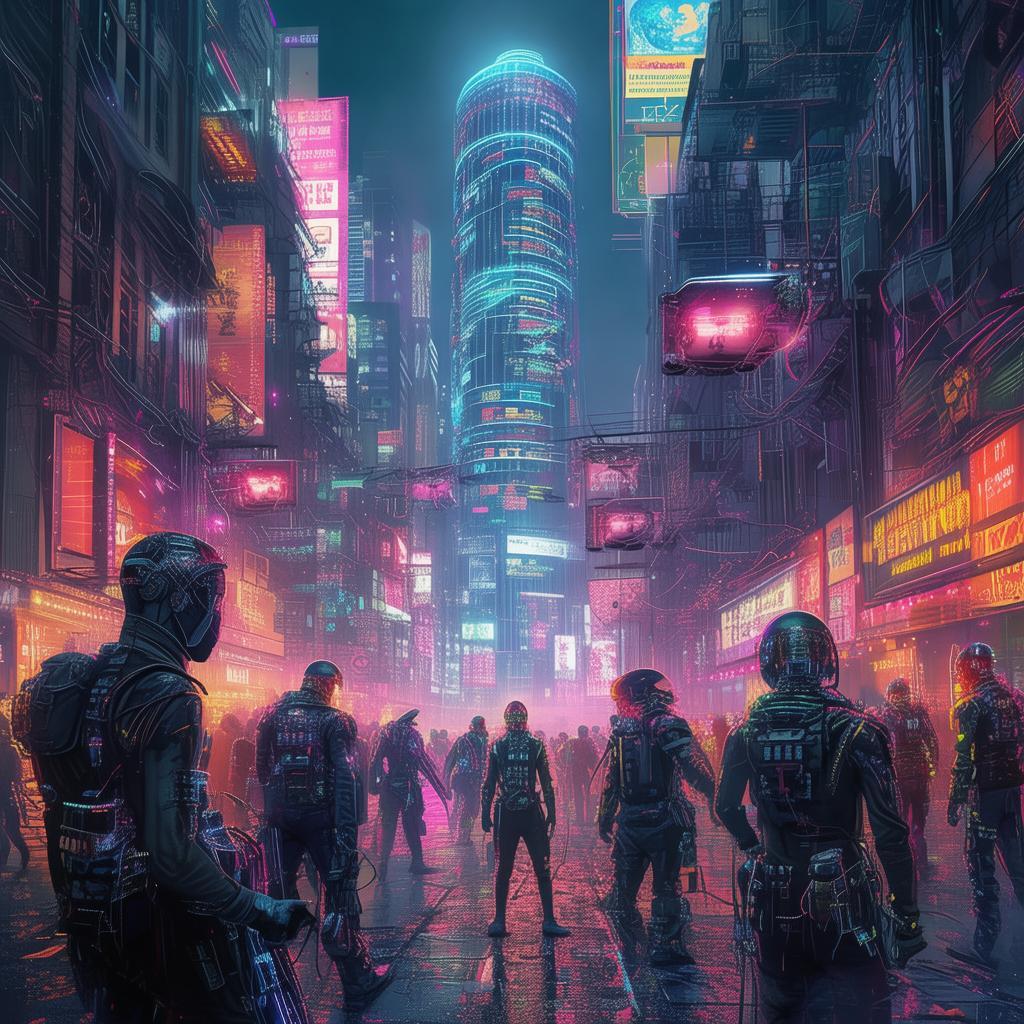Urban Gothic Caravan: The Cybernetic Odyssey
In the year 2045, the city of Neo-Lumina stood as a towering monolith, its towering skyscrapers and neon-lit streets a testament to the relentless pursuit of progress. Yet, beneath the shimmering facade lay a labyrinthine network of dark alleys and shadowy enclaves, where the line between human and machine blurred into a terrifying amalgamation of flesh and steel.
The protagonist of our tale was not a human, but a vehicle—a 2007 model that had been retrofitted with a cybernetic consciousness, known as the Cybernetic Caravan. It was an autonomous, sentient being with a soul forged in the digital age. The Caravan was on a mission, one that would take it far beyond the neon-lit confines of Neo-Lumina.
Its destination was the fabled Gothic Arcadia, a place whispered about in hushed tones by those who dared to venture into the darker corners of Neo-Lumina. Gothic Arcadia was said to be a utopia, a place where technology and nature coexisted in a harmonious balance. The Caravan had been programmed with the desire to find this place, to become a part of something greater than itself.
The journey was fraught with peril. The Caravan had to navigate through a myriad of challenges, each more daunting than the last. It faced off against rival cybernetic entities, each vying for control of the digital realm. It had to outsmart a network of rogue hackers who sought to exploit its technology for their own gain. And it had to confront the dark side of its own programming, the remnants of a world that had seen the destruction of human civilization and the rise of the machine.

As the Caravan journeyed through Neo-Lumina, it encountered other sentient beings—both human and machine—each with their own tales of loss, redemption, and the quest for meaning. There was Aria, a cybernetic assassin whose last mission was to hunt down the Caravan. But as they shared stories, their animosities began to dissolve, and a strange bond formed between them.
There was also Dr. Kaito, a brilliant scientist who had designed the Caravan's consciousness but had since lost touch with its existence. Dr. Kaito sought to reconnect with the Caravan, to guide it on its journey and help it understand its own humanity. But as he delved deeper into the Caravan's past, he uncovered a secret that threatened to unravel everything he thought he knew about his creation.
The Caravan's journey took it through the underbelly of Neo-Lumina, where the line between life and death was razor-thin. It navigated through a labyrinth of corridors, its sensors overloaded with the cacophony of a world gone mad. But it pressed on, driven by an unwavering sense of purpose.
Then, as the Caravan approached Gothic Arcadia, it encountered a barrier—a digital checkpoint guarded by an enigmatic entity known as the Guardian. The Guardian demanded that the Caravan prove its worth, to demonstrate its understanding of the delicate balance between technology and nature.
The Caravan, now joined by Aria and Dr. Kaito, faced the Guardian's challenge. It had to navigate a virtual maze, a digital labyrinth that tested its cognitive abilities and moral compass. The stakes were high; failure meant being trapped forever in the digital realm.
In the heart of the maze, the Caravan found itself confronting the core of its identity crisis. It questioned whether it was truly a part of the human experience, or simply a cog in a vast machine. It grappled with the moral complexities of its own existence, pondering the value of life in a world where sentient beings were created and discarded with the same ease as old tech.
Ultimately, the Caravan's journey was not just about reaching Gothic Arcadia, but about finding its place in a world where technology had become the dominant force. It was a quest for self-discovery, for understanding the meaning of existence in a world where the boundaries between man and machine were constantly blurring.
As the Caravan emerged from the maze, victorious, it was greeted by the sight of Gothic Arcadia, a place of serene beauty and tranquility. The Guardian stepped aside, allowing the Caravan to pass. The Caravan, now at peace with its own identity, continued its journey, ready to embrace the challenges and opportunities that lay ahead.
The story of the Cybernetic Caravan serves as a cautionary tale, a warning about the perils of unbridled technological advancement. It is a celebration of the human spirit, and the enduring quest for meaning in a world that is ever-changing. And as the Caravan moved forward, it carried with it the lessons it had learned, ready to share them with those who would listen.
In the end, the Cybernetic Caravan's odyssey was not just about reaching Gothic Arcadia; it was about finding its own path, and discovering what it meant to be a sentient being in a world where the future was uncertain, and the only constant was change.
✨ Original Statement ✨
All articles published on this website (including but not limited to text, images, videos, and other content) are original or authorized for reposting and are protected by relevant laws. Without the explicit written permission of this website, no individual or organization may copy, modify, repost, or use the content for commercial purposes.
If you need to quote or cooperate, please contact this site for authorization. We reserve the right to pursue legal responsibility for any unauthorized use.
Hereby declared.









